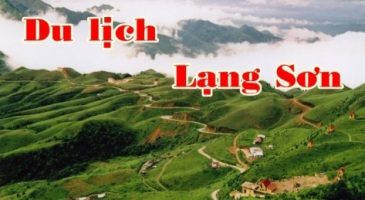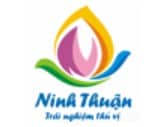 |
|
Vietnam’s MICE tourism expected to explode after COVID-19 |
Vietnam has emerged as a MICE tourism hub thanks to its advantages of natural landscapes and many attractive destinations and accommodation facilities that can facilitate many tourists, including some 5-star luxury resorts with beautiful beaches, suitable for events and teambuilding.
According to the Vietnam National Administration of Tourism, the revenue from MICE tourism is about six times higher than from other types of tourism. Pre-pandemic, MICE tourists often have a 3-4 times longer stay than ordinary travellers and higher spending as well. On average, each European MICE tourist to Vietnam spends between $700-1,000 per day, while Asian visitors spend more than $400 per day. The number of MICE tourists coming to travel agencies were increasing from 10 per cent to 15 per cent per year up to 2019.
Dr. Nguyen Anh Tuan, director of the Institute for Tourism Development Research said, “Many international organisations predict that when all economic sectors are restored, MICE tourism will be one of the most developed tourism forms. Because companies, after a long period of inactivity due to the pandemic, will need to meet, exchange experiences, and promote investment.”
MICE groups at this time with a scale of several tens of thousands of tourists will bring a great source of income and promise to open a brighter future for Vietnamese tourism.
Nguyen Duc Anh, chairman of Vietnam MICE Club under the Vietnam Tourism Association (VTA), said that the plus point of MICE tourism compared to many other types is that it is less seasonal and can be exploited continuously during the year.
“MICE tours depend on business programmes and activities, which can take place continuously by month and quarter. In addition, for every event or conference held, there are additional tours for delegates,” he said.
According to Do Van Thuc, business director of Dat Viet Tour, many businesses often organise tours in the early months of the year to launch new operations and projects, while the end-year tours are mostly meant for commendation. Most foreign businesses in Vietnam also associate MICE tourism with team building to tighten internal solidarity and motivate and convey corporate culture.
Although the tourism industry is still facing difficulties as it cannot welcome international visitors, the potential of the MICE tourism market has stimulated local businesses to prepare new products and services for MICE guests.
Ngo Thi Nga, director of Postum Travel, said that this year the company will build high-end service packages with comfortable resorts and private spaces to organise MICE tourism. However, this year programmes will be shorter and combined with online meetings.
Meanwhile, the members of the Vietnam MICE Club are also designing more activities and experiences to stimulate tourism demand, such as tourism organisation associated with sports activities such as jogging, cycling, rowing, and others.
Seizing opportunities
Vu The Binh, deputy chairman of the VTA, said that MICE tourism has been serving large groups of tourists and requires high-quality services, so not all localities and accommodation establishments can meet the demand. “To develop this type of tourism, localities and business units need to have a strategic vision, invest in facilities, infrastructure, and upgrade services more professionally,” Binh said.
Moreover, to stimulate MICE tourism, most travel and hotel businesses are offering incentives and discounts for these target groups. Some localities have also issued special policies to attract tourists.
Danang is a model city when it comes to piloting such policies. The city has supported a budget of VND300 billion ($13 million) to attract 100 MICE delegations to visit this year.
The leaders of the Danang People’s Committee will issue welcome and thank you letters, as well as arrange cars for groups of visitors.
Plentiful options
A series of venues such as Ariyana, Furama, Naman Retreat, Sheraton Grand, and Grand Mercure Danang are also offering discounts and specials on facilities such as meeting rooms, accommodation rates, and free admission tickets, as well as transportation costs and reduced tour fees.
Some other localities with outstanding utility systems have gradually become favourite destinations selected by delegations.
In the north, Quang Ninh is considered a highlight of MICE tourism thanks to its heritage of Halong Bay and synchronous development of infrastructure with international-class resorts and hotels such as FLC Halong, Vinpearl Halong, Muong Thanh, Wyndham Halong, and Sun Group’s Quang Hanh Onsen.
In the central region, besides the traditional MICE tourist centre of Danang, Nha Trang, many other localities such as Thanh Hoa, Quang Binh, and Quy Nhon are also becoming prominent destinations for events and exhibitions.
This breakthrough comes from the synchronous infrastructure system, the beautiful natural landscape, and the system of high-end hotels and resorts that meet the rigorous standards of MICE customers.
In the south, Phu Quoc is the meeting point of many delegations thanks to its pristine natural scenery and diverse services, especially after the development of high-end hotels and resorts with conference rooms accommodating 500-1000 people.
MICE tourism could thus be a great opportunity to help travel units get out of the difficulties and finally recover from the pandemic. However, for this type of tourism to develop professionally and attract many tourists, localities and businesses not only need to modernise accommodation facilities but also train their human resources to be capable of organising events professionally – especially as Vietnam aims to welcome international tourists when the pandemic is globally under control.





























